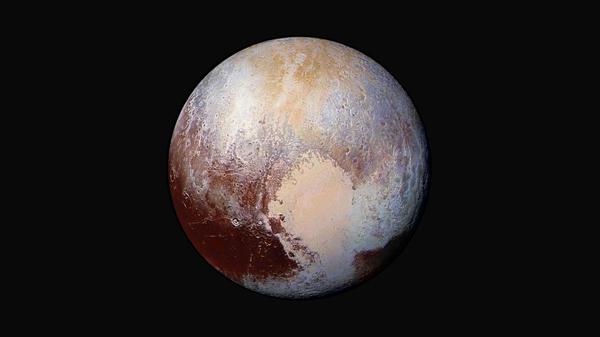How Many Planets Are There? And Is Pluto a Planet?
As astronomers make new discoveries, the definitions of what constitutes a planet or other celestial body change. In 2006, this cost Pluto its status as the ninth planet of our solar system.

The five naked-eye planets are seen on our Night Sky Map in January 2016.
©timeanddate.com
Jupiter and Moon Close Approach 2024
How Many Planets in Our Solar System?
There are eight planets. In order of distance from the Sun, they are:
Mercury, Venus, Mars, Jupiter and Saturn are visible with the naked eye, and have been known throughout human history. Following the invention of the telescope in the 17th century, Uranus (which astronomers generally pronounce with the stress on the first syllable, not the second) was discovered in 1781; Neptune was found in 1846.
What planets can I see tonight?
How bright is the Sun on other planets?
Why Is Pluto Not a Planet?
When Pluto was discovered beyond Neptune in 1930, it was called a planet. However, in the 1990s, astronomers began to realize there are many other bodies in the regions of the solar system beyond Neptune. These include Eris, which was discovered in 2005, and is bigger than Pluto in terms of mass.
We now know that Pluto is part of the Kuiper Belt. This is a region—similar to the asteroid belt that lies between Mars and Jupiter—that contains millions of objects left over from the birth of the solar system. (Eris is known as a scattered Kuiper Belt object.)
Following these discoveries, in 2006 the International Astronomical Union (IAU) came up with new definitions for planets, dwarf planets, and small solar system bodies. Today, Pluto is officially categorized as a dwarf planet.
In many ways, history has repeated itself. In 1801, astronomers announced they had found a planet between Mars and Jupiter; they named it Ceres (pronounced “series”). But within a few years, more “planets” were found in the same region: Pallas, Juno, and Vesta. Eventually, all these bodies lost their status as planets, and were regarded as part of the asteroid belt.

Pluto famously lost its planetary status in 2006.
©NASA/Johns Hopkins University Applied Physics Laboratory/Southwest Research Institute
Planet or Dwarf Planet: What’s the Difference?
According to the IAU, a planet is a celestial body that:
- is in orbit around a star
- has enough mass for its own gravity to give it a round shape
- has cleared away other objects that lie in or near its orbit.
There are eight planets in the solar system.
A dwarf planet is a celestial body that:
- is in orbit around a star
- has enough mass for its own gravity to give it a round shape
- has not cleared away other objects that lie in or near its orbit
- is not a moon.
Dwarf planets include Ceres, Pluto, and Eris.
All other objects orbiting the Sun—except moons—are called small solar-system bodies (SSSBs).
SSSBs include most asteroids, most objects in the Kuiper Belt, all comets, and other objects.

Ceres was regarded as a planet for many years; it then became an asteroid. Today it is classified as a dwarf planet.
©NASA/JPL-Caltech/UCLA/MPS/DLR/IDA
Definitions Change as Science Advances
In ancient Greek, the word planet simply meant “wanderer,” and could be applied to any object that appears to move against the background of fixed stars. Along with the five naked-eye planets, this definition includes the Sun and the Moon. The names of the seven days of week come from these classical planets.
Today, astronomers are debating how to define an exoplanet, which is a planet orbiting a star that is not the Sun. Since 1992, thousands of exoplanets have been discovered. Some of these are so big that astronomers are unsure whether they are planets or brown dwarves. A brown dwarf is a body that is almost—but not quite—large enough to begin a process of hydrogen fusion in its core, and become a star.
As we improve our understanding of the universe, the definitions of the words we use to describe the cosmos will continue to change, too.
Why Mars has more leap years than Earth
Could There Be a Ninth Planet?
Some astronomers speculate there might an undiscovered planet, about the size of Neptune, in an orbit beyond the Kuiper Belt. This hypothetical planet—sometimes referred to as Planet Nine, or Planet X—has been predicted by some computer models; these suggest the gravity of a large, unknown body might be affecting some of the objects in the Kuiper Belt.
For now, however, Planet X remains nothing more than a hypothesis for astronomers to investigate.